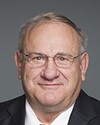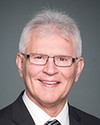Madam Speaker, I will be sharing my time today with the member for South Okanagan—West Kootenay.
I am pleased today to speak in favour of Bill C-18, a bill that would amend the Rouge National Urban Park Act, the Parks Canada Agency Act, and the Canada National Parks Act.
With the indulgence of the House, I am going to dedicate my speech today to Parks Canada employee and volunteer extraordinaire Barry Campbell, of Tofino, B.C. Barry devoted 45 years of his life to Pacific Rim National Park Reserve as a park naturalist, park warden, and volunteer after he retired, pulling hundreds if not thousands of bags of invasive weeds from the park. He died just after Christmas from cancer. Barry mentored me during my first parks job as a park naturalist, and I enjoyed it enough that I continued to make working within four parks and the environment my career and my passion right up to today, when I work as the NDP critic, or advocate, for national parks. I thank Barry for starting me on the path to a lifelong devotion to parks. My sincere condolences go to Barry's wife, Barb, and to his children, Michael and Ben, and their families.
While we are here today to talk about Rouge park, I would like to take a moment to put Rouge into both a historical and a system perspective.
Canada's national parks system began in 1885 with Banff National Park, so it is 132 years old. May 1911 was an important date, as the first ever body to administer national parks was established. It was called the dominion parks branch, which is now Parks Canada. In 1930, the National Parks Act was created and first focused on preservation.
There are currently 45 national parks, 46 with Rouge included. They cover every province and every territory, and they represent a variety of landscapes and natural heritage. They currently cover just over 303,000 square kilometres, or about 3% of the total land area of Canada.
Twelve of our national parks are UNESCO world heritage sites, including Wood Buffalo National Park, which is under investigation right now. There is a fair bit of concern as to whether Wood Buffalo should keep its status due to the Site C dam in British Columbia and the oil sands in Alberta.
The smallest national park is Georgian Bay Islands National Park at 14 square kilometres. Rouge will be just 19 square kilometres, at least until it is increased. The largest park is Wood Buffalo National Park at almost 45,000 square kilometres.
How are these parks currently doing? The most recent report is entitled “State of Canada's Natural and Cultural Heritage Places” from 2016. It talks about the need to improve consultation with stakeholders when establishing parks, regarding ecological integrity. Progress has been made since 2011, when things were in really quite bad shape, but 91% of the indicator ecosystems have now been assessed. Regarding species at risk, the report states that many species continue to face threats from inside and outside heritage places, habitats are disappearing at a rapid rate in many parts of Canada, and climate change can also affect biodiversity.
Parks Canada's 2012 national asset review highlighted that over half of the agency's holdings were in poor or very poor condition and required investments, maintenance, and rehabilitation. It also goes into parks' ecological indicators and some of the issues that are currently out there. There definitely needs to be some improvement in terms of managing our existing parks as well.
Another area where parks and protected areas are challenged in Canada is in meeting the Aichi targets signed onto by Canada. Canada has agreed to set aside 17% of its land by 2020 as protected areas. We are currently at about 10%. Also, 10% of Canada's marine areas should be protected by 2020. We are currently at about 1%.
The environment and sustainable development committee is just completing a study on how to meet and perhaps exceed Aichi targets moving forward. There are many ways we can do that, including working with first nations to create indigenous parks, making sure that there is connectivity between parks and protected areas, working interdepartmentally within the federal government, working with the provinces and territories, municipalities, and non-governmental organizations. There are many other recommendations. I ask members to stay tuned as a great report will be coming to Parliament shortly.
One of the recommendations is also to consider expanding the number of national urban parks, of which Rouge is the first one. Why does Rouge deserve to be Canada's first national urban park, and why do we support the bill?
Bill C-18 proposes amendments to the Rouge National Urban Park Act, and these important amendments include making the maintenance or restoration of ecological integrity the first priority of the minister in all aspects of the management of the park, and adding approximately 1,669 hectares of federal land to Rouge national park.
Bill C-18 also broadens Parks Canada's ability to pay out funds from the new parks and historical sites account. That will help create new parks as well.
Finally, Bill C-18 modifies the boundary of Wood Buffalo National Park in Alberta by withdrawing 37 square kilometres to create the Garden River Indian Reserve, which is a long planned commitment around reconciliation, so there are three aspects to the park.
Why is Rouge that important? First, Rouge park is one of the most biologically diverse areas in Canada, including a rare Carolinian forest, 23 federally designated species at risk, and over 1,700 plant and animal species. It also provides the only ecological connection for wildlife between the Oak Ridges moraine and Lake Ontario. It includes many agricultural and culturally important resources, including a national historic site and one of Canada's oldest known aboriginal historic sites and villages.
Important as well, there is an active farming community that is not protected under the Park Act, and it is really important to realize that agricultural activities and conservation, if done well, can go hand in hand, and Rouge park would be a good model to demonstrate that.
It is the first national park in an urban setting, accessible by public transit. It creates a model for other areas of protection in urban settings, and approximately 20% of Canada's population live within one hour of Rouge park. These are all really important factors as to why it is important to protect Rouge.
In conclusion, we want to recognize the hard work and dedication of all community members who have worked tirelessly to protect the existing parklands and to establish Rouge National Urban Park. We believe that future national park management for Rouge should do a number of things. It should clearly prioritize ecological health, ecological integrity and conservation. It should ensure that all activities that may affect the park undergo a thorough environmental assessment, and that is one of the challenges of that bike trail in Jasper, there has been no environmental assessment or community involvement. It should include a science-based management plan to provide for strong public and parliamentary oversight. We should consider adding almost 10,000 acres to the park by adding federal lands currently set aside for an airport.
We will continue to hold the Liberal government accountable to deliver a Rouge park that truly can serve as a model for establishing a number of new urban national parks across Canada.






